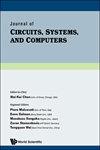弱光图像增强的双交叉注意多级嵌入网络
IF 1
4区 工程技术
Q4 COMPUTER SCIENCE, HARDWARE & ARCHITECTURE
引用次数: 0
摘要
弱光图像增强任务旨在提高信息在黑暗中的可见性,以获得更多的数据并加以利用,同时也提高图像的视觉质量。本文提出了一种双交叉关注多阶段嵌入网络(dual cross-attention multi-stage embedding network, DCMENet),用于快速、准确地将低光照图像增强为高可见度的高质量图像。通过在编码器-解码器结构中引入注意机制,解决了增强图像中存在较多噪声影响图像质量的问题。此外,编码器-解码器可以将大部分注意力集中在图像的暗区,更好地关注图像中被暗区遮挡的细节特征。特别地,通过在编码器中融合CNN-Attention和Transformer,解决了Transformer在数据集较小时性能不佳的问题。考虑到弱光图像增强任务的目的,我们将恢复图像细节信息的重要性提高到与重建光照相同的水平。对于图像中的纹理细节等特征,利用空间注意和像素注意进行级联提取,在降低模型复杂度的同时也提高了性能。最后,将编码器-解码器获得的全局特征融合到浅层特征提取结构中重构光照,同时引导网络在黑暗中集中提取信息。本文提出的DCMENet在客观质量评价和主观评价两方面都取得了最好的结果,而对于工作在弱光环境下的计算机视觉任务,采用本文提出的DCMENet增强后的图像表现出最好的性能。本文章由计算机程序翻译,如有差异,请以英文原文为准。
Dual cross-attention multi-stage embedding network for low-light image enhancement
The low-light image enhancement task aims to improve the visibility of information in the dark to obtain more data and utilize it, while also improving the visual quality of the image. In this paper, we propose a dual cross-attention multi-stage embedding network (DCMENet) for fast and accurate enhancement of low-light images into high-quality images with high visibility. The problem that enhanced images tend to have more noise in them, which affects the image quality, is improved by introducing an attention mechanism in the encoder–decoder structure. In addition, the encoder–decoder can focus most of its attention on the dark areas of the image and better attend to the detailed features in the image that are obscured by the dark areas. In particular, the poor performance of the Transformer when the dataset size is small is solved by fusing the CNN-Attention and Transformer in the encoder. Considering the purpose of the low-light image enhancement task, we raise the importance of recovering image detail information to the same level as reconstructing the lighting. For features such as texture details in images, cascade extraction using spatial attention and pixel attention can reduce the model complexity while the performance is also improved. Finally, the global features obtained by the encoder–decoder are fused into the shallow feature extraction structure to reconstruct the illumination while guiding the network for the focused extraction of information in the dark. The proposed DCMENet achieves the best results in both objective quality assessment and subjective evaluation, while for the computer vision tasks working in low-light environments as well, the enhanced images using the DCMENet proposed in this paper show the best performance.
求助全文
通过发布文献求助,成功后即可免费获取论文全文。
去求助
来源期刊

Journal of Circuits Systems and Computers
工程技术-工程:电子与电气
CiteScore
2.80
自引率
26.70%
发文量
350
审稿时长
5.4 months
期刊介绍:
Journal of Circuits, Systems, and Computers covers a wide scope, ranging from mathematical foundations to practical engineering design in the general areas of circuits, systems, and computers with focus on their circuit aspects. Although primary emphasis will be on research papers, survey, expository and tutorial papers are also welcome. The journal consists of two sections:
Papers - Contributions in this section may be of a research or tutorial nature. Research papers must be original and must not duplicate descriptions or derivations available elsewhere. The author should limit paper length whenever this can be done without impairing quality.
Letters - This section provides a vehicle for speedy publication of new results and information of current interest in circuits, systems, and computers. Focus will be directed to practical design- and applications-oriented contributions, but publication in this section will not be restricted to this material. These letters are to concentrate on reporting the results obtained, their significance and the conclusions, while including only the minimum of supporting details required to understand the contribution. Publication of a manuscript in this manner does not preclude a later publication with a fully developed version.
 求助内容:
求助内容: 应助结果提醒方式:
应助结果提醒方式:


